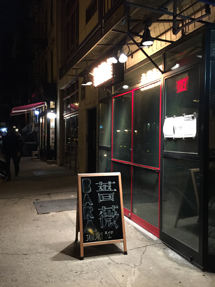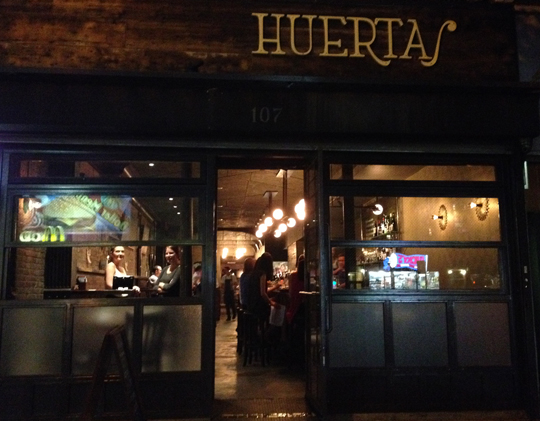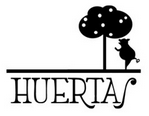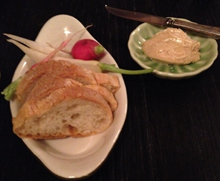
 There’s a tradition at Le Cirque not quite like any other in town. Sirio Maccioni, the patriarch of the family business, still holds court, as he has done since 1974, and before that at the fabled Colony, which once defined elegant high society dining in Manhattan.
There’s a tradition at Le Cirque not quite like any other in town. Sirio Maccioni, the patriarch of the family business, still holds court, as he has done since 1974, and before that at the fabled Colony, which once defined elegant high society dining in Manhattan.
Ironically, Mr. Maccioni conceived of Le Cirque as a more hip, casual alternative to The Colony. As William Grimes explained, in a New York Times obituary of Jean Vergnes, the restaurant’s founding chef:
Le Cirque, as the name implied, would dispense with the fussiness of the old-style haute cuisine restaurants and incorporate some of the pizzazz that Mr. Maccioni had observed at Maxwell’s Plum, Warner LeRoy’s wildly popular restaurant for swinging singles.
 Today, with The Colony and others of its ilk long gone, Le Cirque is practically the last surviving example of the very formality that Maccioni had sought to replace. Once progressive, it is now the old guard.
Today, with The Colony and others of its ilk long gone, Le Cirque is practically the last surviving example of the very formality that Maccioni had sought to replace. Once progressive, it is now the old guard.
Le Cirque is now in its third location, and as of four months ago, under a new chef, Olivier Reginensi (left). To be exact, he is Le Cirque’s ninth executive chef—so the website tells us—the rare example of a restaurant that wants to remind you how many names have passed through the kitchen’s revolving door.
It’s an impressive list. At a 35th anniversary dinner in 2009, the chefs who came back to cook included Alain Allegretti, David Bouley, Daniel Boulud, Iacopo Falai, Craig Hopson, Michael Lomonaco, Pierre Schaedelin, Pierre Poulin, Dieter Schorner, Alex Stratta, Bill Telepan, Jacques Torres and Geoffrey Zakarian (see photo below).

If you expand the list to include those who’ve worked for a chef who formerly worked at Le Cirque, you’ve got a Who’s Who of the NYC culinary universe, including many who now cook in idioms far removed from the classics Le Cirque is best known for. What the city’s dining scene would have been, without Le Cirque, is difficult to imagine.
Management realizes there’s a delicate balancing act between playing up the old tradition and developing a new one. As a Eater.com reported when Chef Reginensi was appointed:
The Le Cirque team is hoping the new push will bring the brand to new diners while reminding current and former clients that they haven’t been put out to pasture. “It will show people this is not your dad’s Le Cirque any more.” says Carlo Mantica, Le Cirque’s co-general manager.
The perception that Le Cirque is strictly old-school is difficult to efface, so pervasive has it become. By today’s standards, it is comparatively formal, with one of the most expensive à la carte menus in town, and jackets required in the main dining room. (The adjoining café is less formal and less costly.)
How to attract a new generation? Sirio’s three sons, who now run Le Cirque and its sister restaurants day to day, are alive to the problem. The hipsters dining on park benches in Bushwick won’t be coming here anytime soon. But the recent success of premium menus at places like Brooklyn Fare and Atera, to say nothing of the continuing appeal of the traditional four-stars, shows that there are still plenty of diners willing to spend big in restaurants.

Mauro Maccioni invited us recently to sample Chef Reginensi’s new menu as his guest at the chef’s table, just inside the kitchen. All of the usual caveats about a comped meal apply: we experienced Le Cirque as few do. Restaurants can adjust the service for VIPs, but the food is what it is—and at Le Cirque it’s excellent.
The cuisine has always been difficult to classify. Its roots are French, but the owners are Italian, and a spaghetti primavera is a fixture on the menu. And there is ample room for a chef’s individual expression on the flesh of the restaurant’s classic French bones.


The amuse bouche (above left) was a tweak on traditional escargots, with Burgundy snails, parsley, and croutons, baked in tiny, half-eggshell ceramic bowls. Here they’re lighter and sweeter than usual, and not as garlicky.
Then came a duo (above right) of very good octopus with white bean and tomato confit; and a langoustine on a bed of spring vegetables (carrots, snow peas, leeks, and red peppers).


Next came a very rich rabbit porchetta (above left), similar to a roulade or a ballotine, mixed with vegetables, one of the more technically impressive dishes on the menu. We were also quite pleased with asparagus (above right) with a poached egg and morel mushrooms.


I believe we were served two pastas, one of which we neglected to photograph. Fresh peas, ricotta gnocchi, and morel mushrooms (above left) were wonderful, even if the morels were repeated from the previous course.
I also made note of ravioli stuffed with vegetables, braised romaine lettuce, prosciutto, and mozzarella. It was difficult to make out all of those ingredients, but it was the hit of the evening: “like eating oysters,” my girlfriend said.
Sole Florentine (above right) was another techical achievement, with spinach, crayfish, and a red and white sauce unfamiliar to me, which the chef described as a sauce cardinal.


Duck (above left) was comparatively pedestrian and slightly overpowered by olives, though the pairing with turnip was better than I would have expected.
Romina Peixoto, Le Cirque’s first female pastry chef, deserves to be better known. Baked Alaska (above left), was flambéed tableside. This was followed by Rhubarb (below left), a lemongrass panna cotta, pistachio financier, and rhubarb sorbet; and a Tropical Vacherin (below right), with mango sorbet, pinapple forzen yogurt, tropical cilntro salsa.




We concluded with an embarrassment of petits fours, the last of these presented in a small upholstered jewelbox.
Some of my readers will no doubt believe that a comped review is compromised—although I’ve been here twice before on my own dime, and also to the same owners’ Italian place, Osteria del Circo, so clearly this is cuisine and an atmosphere I am predisposed to like. Those who find Le Cirque old-fashioned, may fail to appreciate how many careers it has launched, and just how progressive it originally was.
Keeping Le Cirque in the conversation is a tall order. I’m glad I can watch as a fan.
Le Cirque (151 E. 58th Street between Lexington & Third Avenues, East Midtown)
 Tuesday, February 10, 2015 at 08:04AM
Tuesday, February 10, 2015 at 08:04AM 

 David Chang’s Momofuku empire now spans a dozen restaurants in three countries. But how many restaurants outside of that empire are run by chefs boasting “Momofuku vet” on their bios? I’ve lost count.
David Chang’s Momofuku empire now spans a dozen restaurants in three countries. But how many restaurants outside of that empire are run by chefs boasting “Momofuku vet” on their bios? I’ve lost count.





















































































